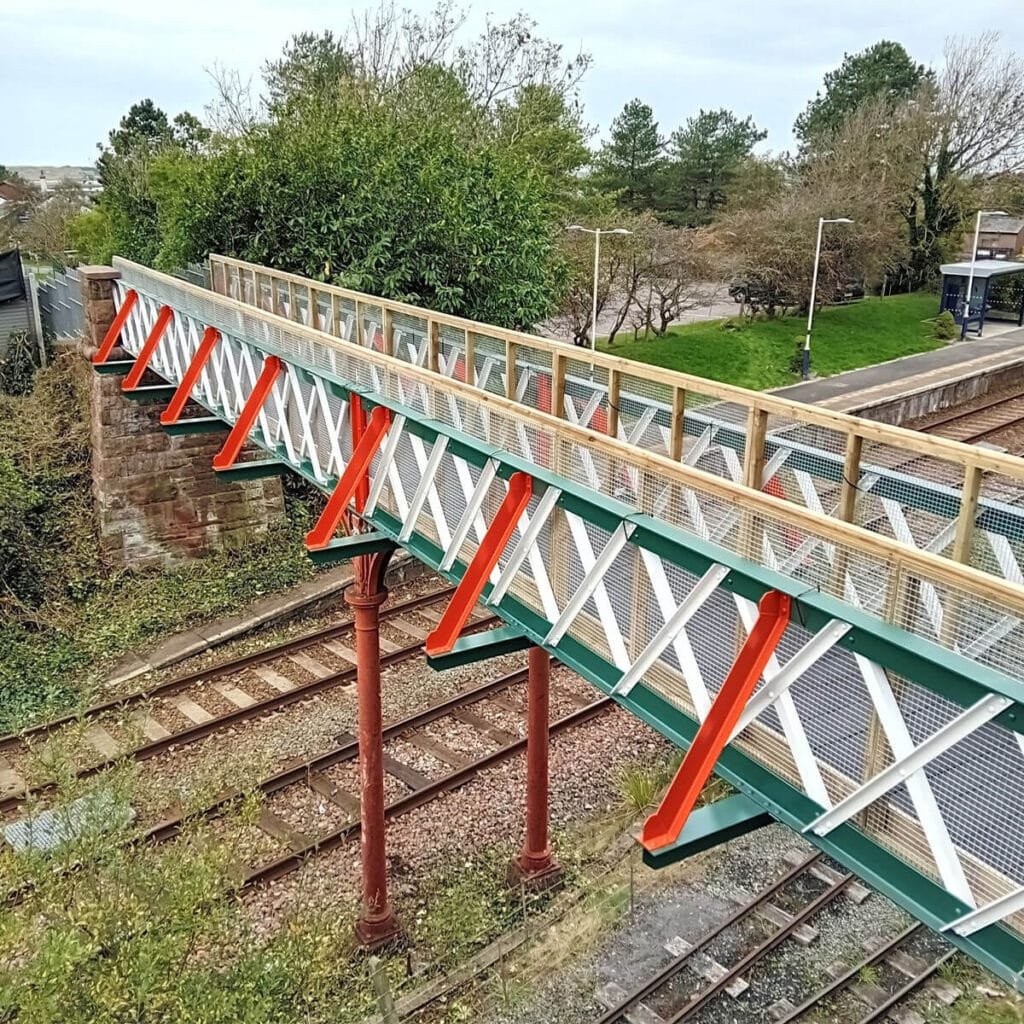At Matrix Consulting Engineers, we pride ourselves on delivering technically robust, practical, and buildable engineering solutions, especially when it comes to maintaining the UK’s historic rail infrastructure. One recent project exemplified this perfectly: the survey, design, and repair of a wrought iron footbridge spanning a live railway line.
This project demanded a careful balance of heritage sensitivity, operational constraints, and engineering precision—a challenge we were proud to take on as a fully integrated team, from initial survey through to Form G approval.

Given the bridge’s location over a live railway, traditional access would have been disruptive and risky. Instead, we deployed our
in-house drone surveying team to complete a full structural inspection, capturing high-resolution imagery and generating a comprehensive point cloud model of the structure.
This allowed us to assess the bridge safely, quickly, and in detail, without the need for early-stage trackside access or possessions. The resulting 3D model gave our engineers a precise basis for analysis, defect mapping, and repair planning.


To enable the safe execution of the repairs, our temporary works engineers designed a bespoke Slimshor structure and protective measures for both operatives and railway users. These works were developed to accommodate:
We prepared and submitted a full Form C submission for the temporary works, ensuring full compliance with Network Rail standards and enabling smooth approval through the contractor’s assurance process.

Following detailed assessment and load modelling of the existing structure, including replication of historic wrought iron sections, we developed a repair strategy that preserved as much of the original ironwork as possible. This included:
We then prepared and submitted the Form G (Final Design Certificate) for the permanent works, including all supporting calculations, fabrication drawings, and material specifications.

Matrix Consulting Engineers supported Network Rail in the full restoration and reinstatement of the historic wrought iron footbridge at Ravenglass Station on the Cumbrian Coast Line. Originally constructed in 1849, the bridge was found to be in poorer condition than first anticipated, prompting a complete refurbishment. The entire structure was carefully removed and transported for repair and repainting, restoring it to its original appearance while ensuring modern safety standards were met.
The works were completed off-site to allow train services to continue operating throughout the project. Once refurbished, the bridge was returned, reassembled, and reopened to passengers, marking the successful completion of another heritage preservation scheme.
A key strength of this project was that all stages, from survey to Form C and Form G, were delivered entirely by Matrix Consulting Engineers. With surveyors, structural engineers, and temporary works specialists working together in-house, the client benefited from:
This project is a clear example of how modern digital engineering can support the preservation of historical infrastructure, ensuring compliance, safety, and efficiency without compromising character.
If you’re managing ageing assets or heritage structures and need a partner who can deliver BIM-integrated, multidisciplinary rail design from Form A to Form G, we’d love to support your next challenge.
Please fill in the form and we will get back to you as soon as possible to discuss your new project.